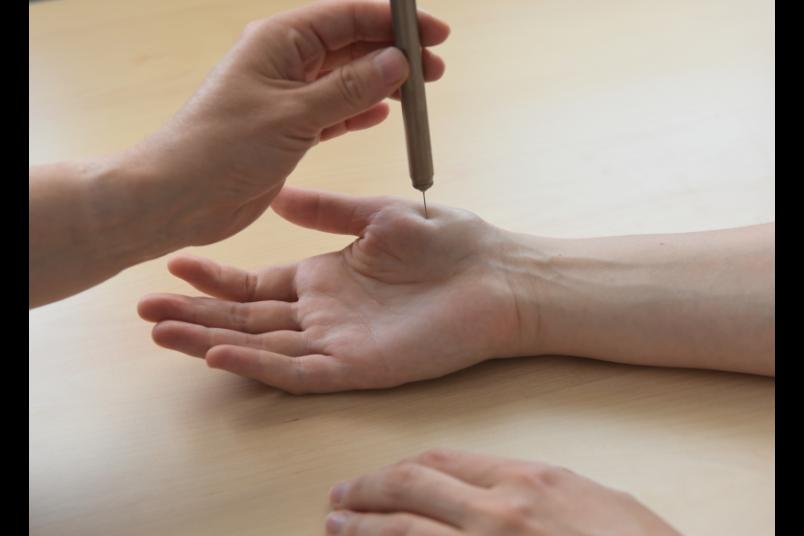
Neurology
If the right hand is hypersensitive due to an injury to the left
An international research team has investigated mechanisms behind sensory abnormalities following nerve injuries.
Palsy, numbness or pain: people with nerve injuries suffer from these symptoms. For those affected, such sensory abnormalities can mean permanent and significant restrictions – which may even prevent them from working. An international research team including the Department of Neurology at BG University Hospital Bergmannsheil of Ruhr-Universität Bochum (RUB, director: Professor Martin Tegenthoff) has recently demonstrated that sensory abnormalities following unilateral nerve injuries can not only occur in the affected area of the body but often also in the contralateral mirror-image body area. The results of the study were published in the journal “Neurology” on 19 May 2021 under the leadership of Professor Elena Enax-Krumova, holder of the endowed professorship of the German Social Accident Insurance (DGUV).
Nerve injuries: frequent complication after occupational accidents
Peripheral nerves refer to nerves that lie outside of the brain and spinal cord. They run throughout the entire body. These bundles of nerve fibres can be damaged in the event of blunt or sharp force trauma due to accidents, as well as during surgery. Injuries to the peripheral nerves are a frequent complication, particularly after occupational accidents. Patients often suffer from motor and sensory disorders in the affected area of the body. These can lead to persistent complaints and impairments. The underlying mechanisms are not yet fully understood.
“In patients with shingles, it is known that sensory abnormalities can not only occur in the affected area but also on the opposite side of the body,” explains Enax-Krumova. “We wanted to find out to what extent such contralateral changes occur also in unilateral nerve injuries and to what factors they are related. Together with other centres from the German Research Network on Neuropathic Pain (DFNS) and some other European centres, the Department of Neurology and the Department of Pain Medicine (temporary senior doctor: Dr. Dr. Andreas Schwarzer) at Bergmannsheil were involved in a Europe-wide research project.
To answer this question, data sets from a total of 424 patients were analysed. They all suffered from unilateral painful or painless peripheral nerve disorder (neuropathy), caused either by a peripheral nerve injury, a nerve root injury or shingles. In all of the participants, the unaffected side of the body was examined with regard to possible sensory changes. Following a standardised procedure, detection and pain perception for cold, warm, sharp and blunt stimuli were examined using quantitative sensory testing (QST).
Contralateral sensory abnormalities
Contralateral sensory abnormalities were frequent both in patients with unilateral painful and painless neuropathy, even on the unaffected side of the body. Reduced contralateral perception of temperature and light touch was suggested to be an indicator of a possible unfavourable central nervous response. In a subgroup of patients with increased pain sensitivity on the affected side of the body, contralateral hypersensitivity to sharp stimuli was also registered. According to the research team, this could indicate hypersensitivity of the central nervous system, called central sensitisation. The so called descending facilitation from the brainstem of pain processing in the spinal cord seems to be a clinically important mechanism of pain amplification. The changes that were found did not depend from the disease duration. Pain intensity, underlying condition and the affected area of the body were associated with changes in only single parameters in the performed test battery.
“The results of this study show that the mechanisms of sensory abnormalities following a unilateral nerve injury appear to spread to the opposite side of the human body, both for painful and painless nerve injuries,” summarises Elena Enax-Krumova. “Patients with signs of central sensitisation on the unaffected side represent a subgroup that needs to be investigated further with regard to both the precise underlying mechanisms and their response to specific treatment options.” The authors of the study expect that such findings will enable personalized treatment approaches for neuropathic pain in the future.